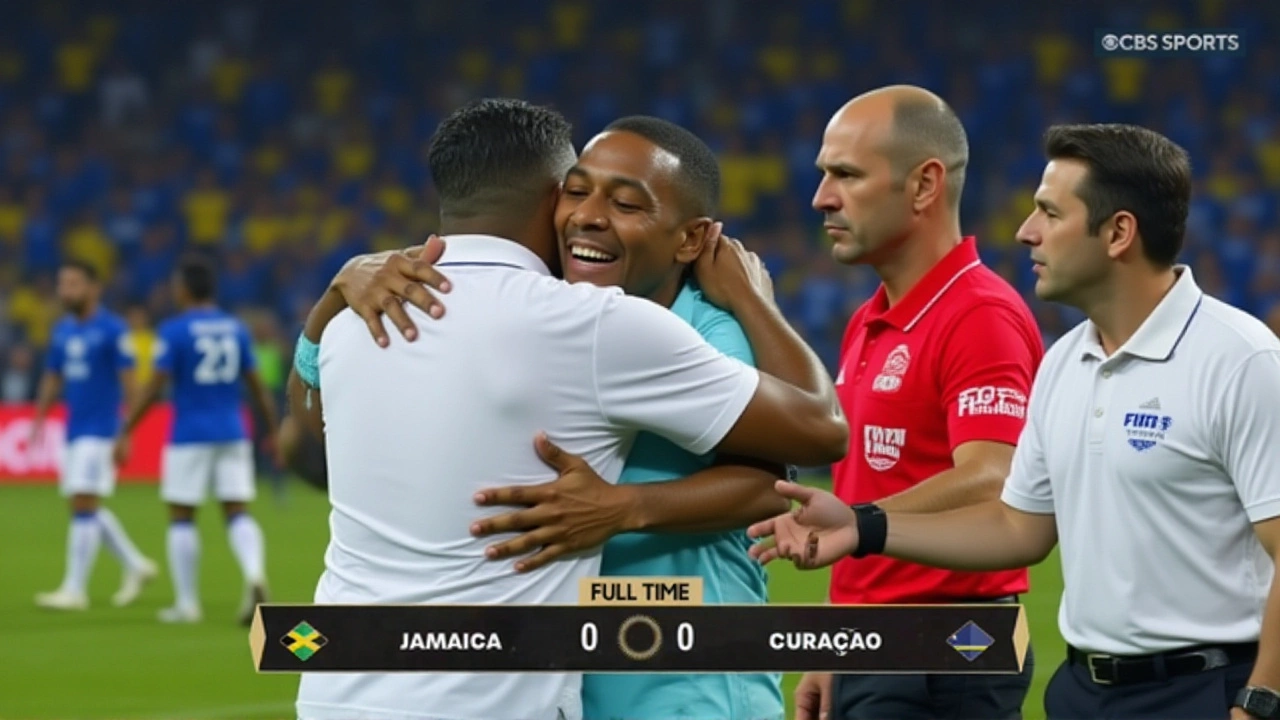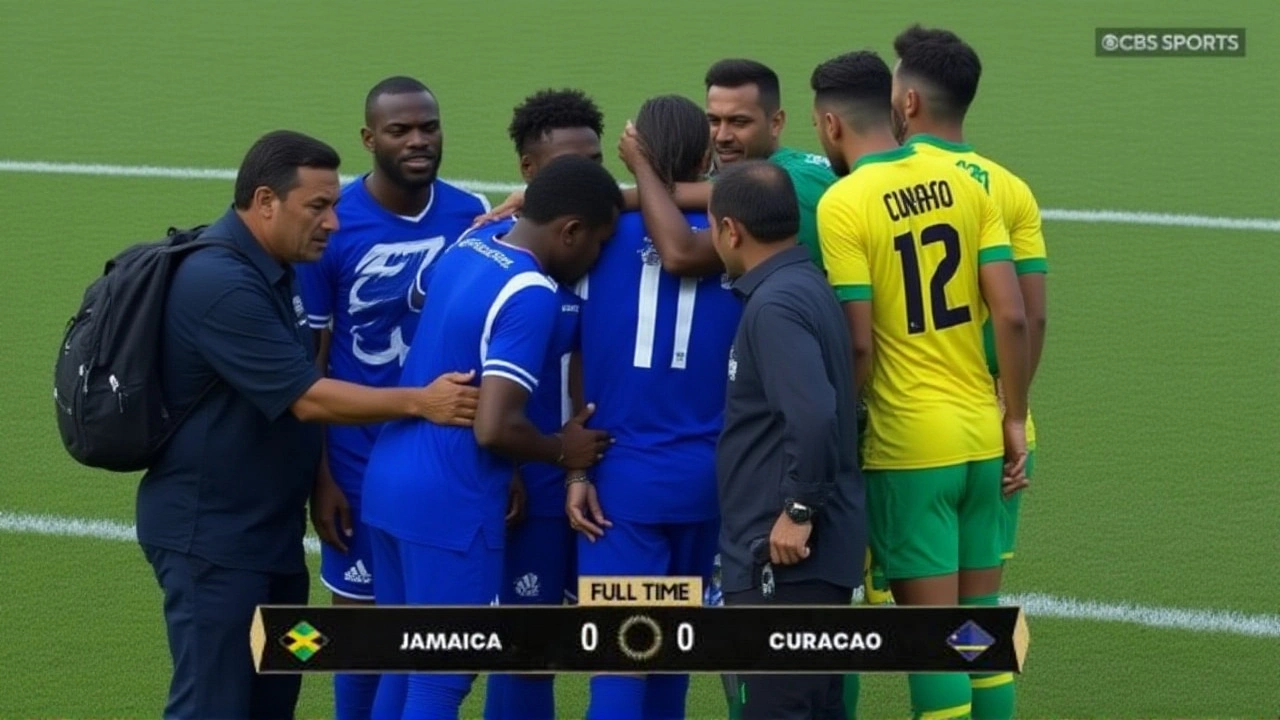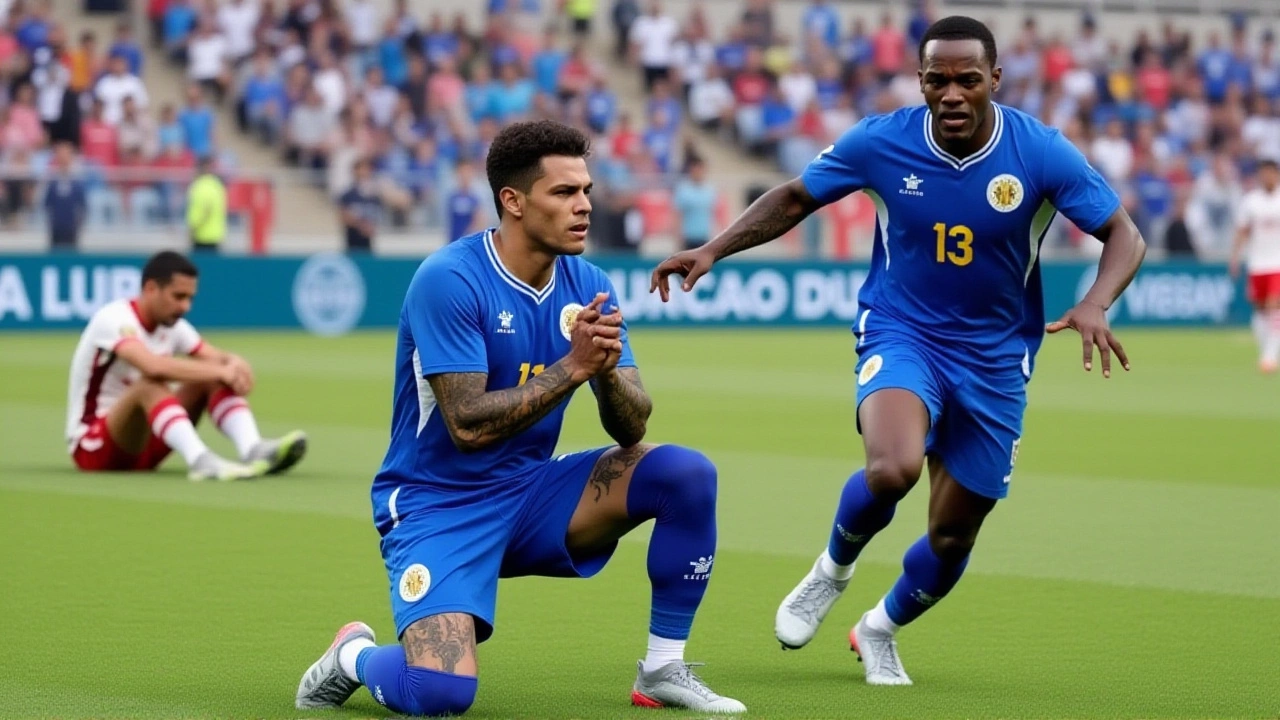On November 18, 2025, Curaçao stunned the football world—not by scoring a last-minute winner, but by drawing 0–0 against Jamaica to seal their place in the 2026 FIFA World CupCanada, Mexico, and the United States. What made it unforgettable? Curaçao became the smallest nation ever to qualify for a World Cup… without a single player born on its soil. Population: 165,000. Land area: 444 square kilometers. And yet, they’re going to the biggest stage in football, led by a 77-year-old Dutchman who’s rewriting the rules of international sport.
A Nation Without Native Players
The numbers don’t lie. According to FIFA statistics cited by beIN Sports, Curaçao’s squad for the 2026 qualifiers featured zero players born on the island. Not one. Instead, the team was built entirely from the diaspora—mostly Dutch-born athletes of Curaçaoan descent. Eloy Room, their starting goalkeeper, was born in Nijmegen. Defender Tyrick Bodak grew up in Almere. Midfielder Juninho Bacuna, with 46 caps and 13 goals since 2019, came through Ajax’s academy. Forward Rangelo Janga, the team’s top scorer with 21 goals in 42 appearances, was raised in the Netherlands too.
It’s not a fluke. This is the result of a deliberate, decades-long strategy. After the dissolution of the Netherlands Antilles in 2010, Curaçao became a separate FIFA member in 2011. With a domestic league barely able to field competitive sides, they turned to the Netherlands—where tens of thousands of Curaçaoans live, and where youth academies have long scouted talent from the islands. The result? A team that plays like a European side, with the soul of the Caribbean.
The Architect: Dick Advocaat
Behind this revolution is Dick Advocaat, the 77-year-old Dutch tactician who once managed the Dutch national team, Sunderland, and Zenit St. Petersburg. He took over Curaçao in 2024, according to Curacao-United.com, and didn’t waste time. His first move? A 24-man roster announced on September 26, 2025, that included returning veterans like Kenji Gorré and Brenet, plus newcomers like Sontje Hansen and Obispo.
Advocaat didn’t just pick players—he built a system. He gave them structure, discipline, and a clear identity: high pressing, quick transitions, and a rock-solid defense. The 0–0 draw in Jamaica wasn’t pretty, but it was perfect. It wasn’t about flair; it was about survival. And it worked. If he leads them on the pitch in 2026, he’ll be the oldest manager ever to coach at a World Cup finals.

Why This Changes Everything
Before Curaçao, Iceland held the title of smallest World Cup qualifier—population 340,000. They had a domestic league. They had local stars. Curaçao didn’t need any of that. They didn’t even need homegrown talent. They just needed bloodlines and ambition.
This isn’t just a feel-good story. It’s a blueprint. Other small nations—Aruba, Suriname, even smaller Caribbean islands—are watching. The eligibility rules in international football still allow players to represent a nation if they, their parents, or grandparents were born there. Curaçao didn’t bend the rules—they exploited them with surgical precision.
Experts say this signals a shift. “We’re seeing the rise of transnational teams,” says Dr. Lina Mendez, a sports sociologist at the University of Amsterdam. “The nation-state model of football is crumbling. Identity is becoming more cultural than geographic.”
The Ripple Effect
For the players, this isn’t just about football. It’s about belonging. Gino van Kessel, who has 26 goals in just 8 caps, told De Telegraaf after the Jamaica match: “I never set foot on Curaçao until I was 21. But when I put on this jersey, I feel more Curaçaoan than I ever did in Rotterdam.”
Back home, celebrations erupted. Not because they expected it—but because they finally saw themselves reflected in a global spotlight. The island’s entire economy, reliant on tourism and oil, got a boost just from the headlines. Local businesses printed “Curaçao 2026” merchandise before the draw even ended.
Meanwhile, FIFA is quietly reviewing eligibility rules. The question isn’t whether this will happen again—it’s how soon. Will the Netherlands start fielding two teams? Will Caribbean nations pool resources? Will we soon see a “Dutch Caribbean XI” in the World Cup?

What’s Next for Curaçao?
The 2026 World Cup draw is set for December 2025. Curaçao will be in Pot 4—the lowest seeding. They’ll likely face giants: Brazil, Spain, or Germany. But don’t count them out. They’ve already defied logic once. They’ve got a coach who’s seen it all. And they’ve got a squad that doesn’t care where they were born—only where they’re going.
One thing’s certain: when the opening whistle blows in 2026, the world will be watching. Not just to see if Curaçao can win—but to see if a nation of 165,000 people, with no homegrown players, can change football forever.
Frequently Asked Questions
How is Curaçao allowed to field players born in the Netherlands?
FIFA allows players to represent a nation if they, their parents, or grandparents were born there. Since Curaçao was part of the Netherlands Antilles until 2010, and its citizens hold Dutch nationality, players born in the Netherlands can qualify through ancestry. This loophole has been used by several Caribbean nations, but Curaçao is the first to build an entire World Cup squad this way.
Who are the key players on Curaçao’s 2026 squad?
Top contributors include forward Rangelo Janga (21 goals in 42 caps), midfielder Juninho Bacuna (13 goals in 46 caps), and goalkeeper Eloy Room, who plays for PSV Eindhoven. Other key names are Tyrick Bodak, Kenji Gorré, and Gino van Kessel, who has scored 26 goals in just 8 appearances. All were born outside Curaçao, primarily in the Netherlands, and play in top European leagues.
Why is Dick Advocaat’s role so significant?
At 77, Advocaat is the oldest manager ever to lead a World Cup-qualifying campaign. His experience with the Dutch national team and top European clubs brought tactical discipline and professionalism to a squad that previously lacked structure. He didn’t just select talent—he created a system that maximized the strengths of diaspora players, turning potential into results.
Will other small nations copy Curaçao’s model?
Absolutely. Suriname, Aruba, and even smaller islands like Sint Maarten are already exploring similar strategies. With FIFA under pressure to tighten eligibility rules, we may soon see a wave of diaspora-driven teams. The future of international football may not belong to the biggest countries—but to the most connected ones.
What impact does this have on Curaçao’s domestic football?
The immediate effect is mixed. While the national team’s success inspires youth, the domestic league remains underfunded and underdeveloped. Some fear the diaspora model could discourage local talent development. But others argue it’s a stepping stone—Curaçao’s players now serve as role models, and increased visibility may eventually lead to better infrastructure and investment at home.
How did Curaçao’s population size compare to other qualifying nations?
Curaçao’s population of 165,000 is less than half of Iceland’s (340,000), the previous record-holder. It’s smaller than many major cities—like Portland, Oregon (650,000) or San Jose, California (1 million). By land area, it’s just 444 square kilometers, roughly the size of Chicago. Its qualification proves that size doesn’t determine success—it’s strategy, identity, and connection that matter.
